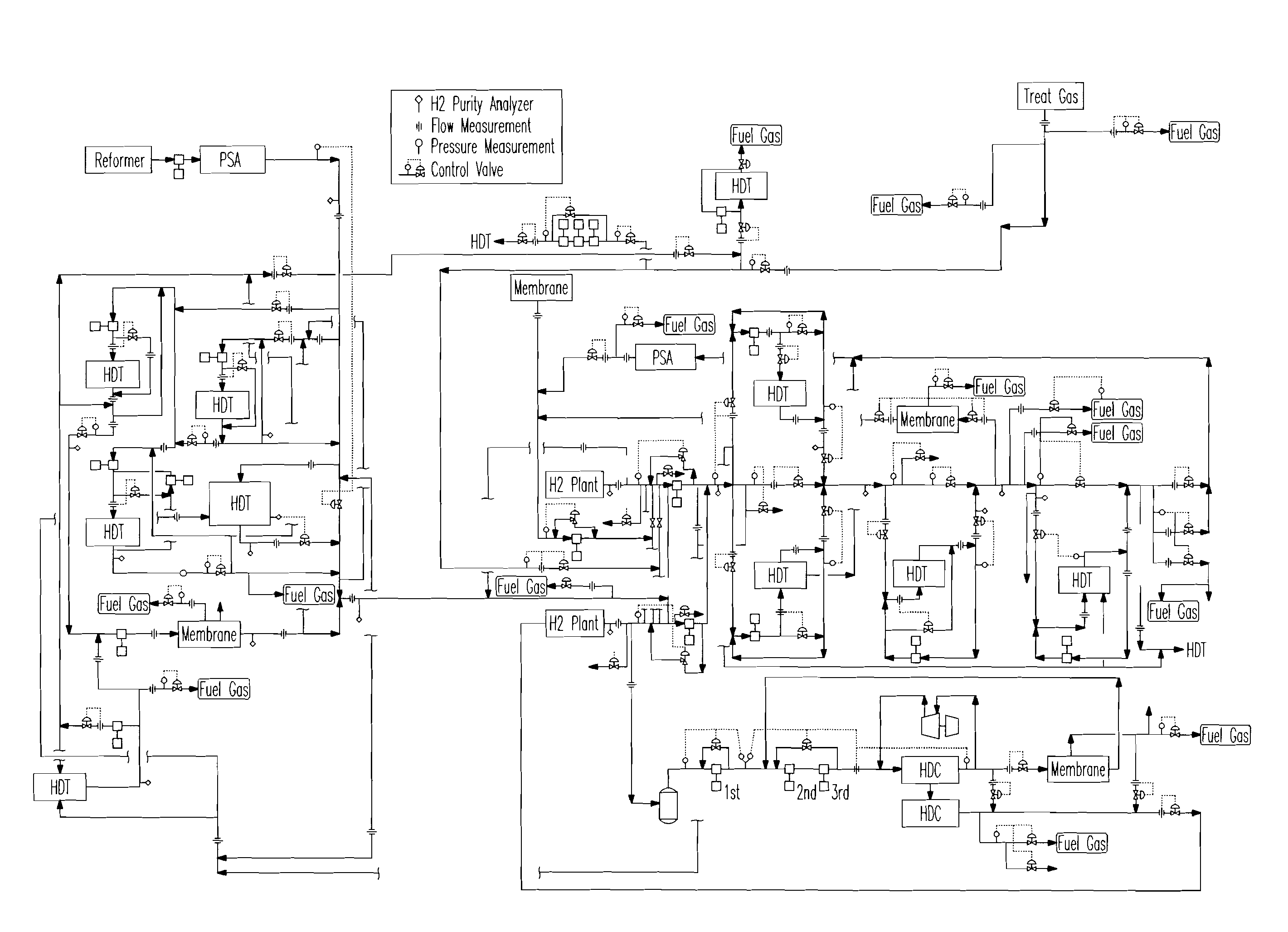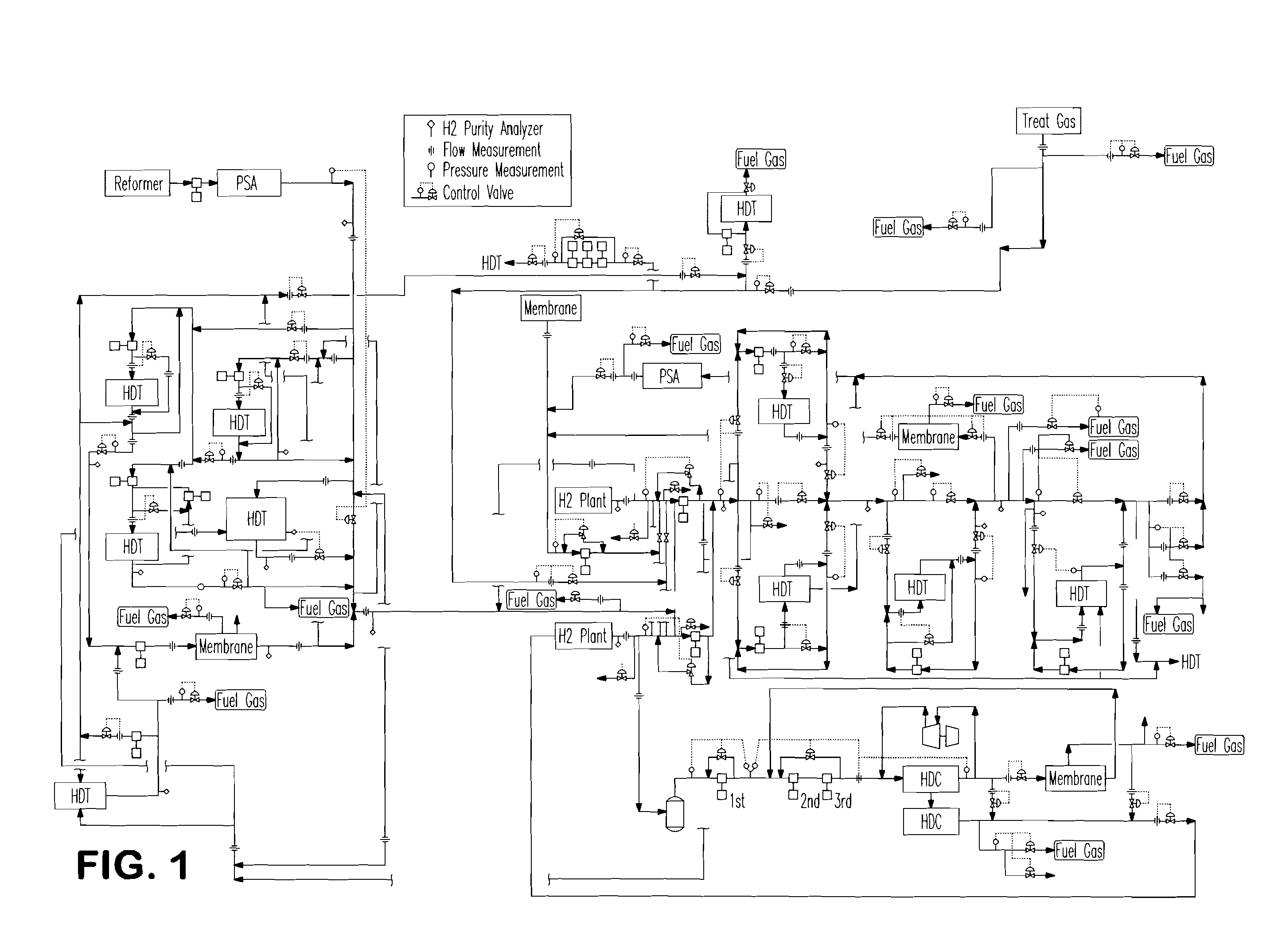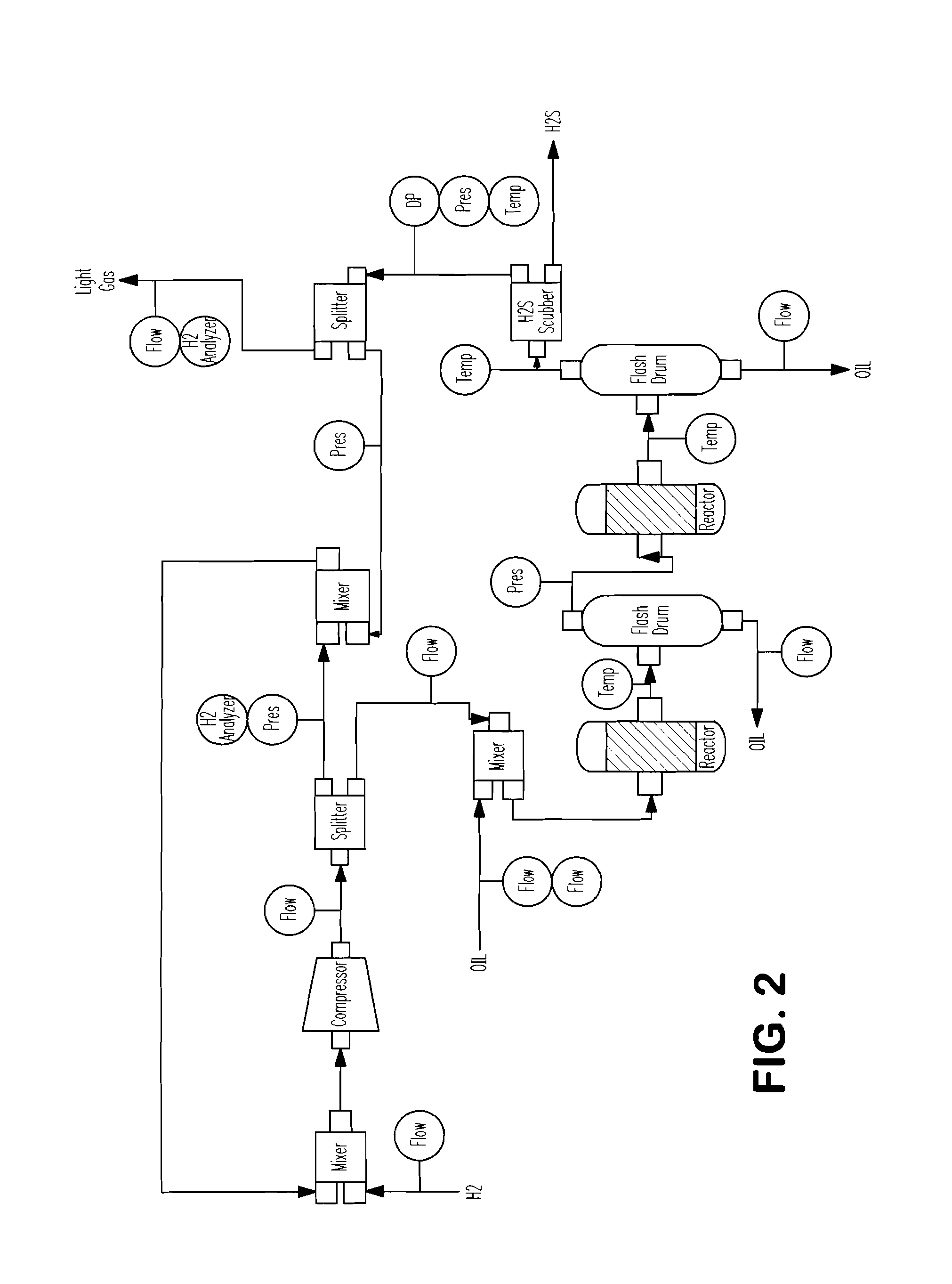Optimizing refinery hydrogen gas supply, distribution and consumption in real time
- Summary
- Abstract
- Description
- Claims
- Application Information
AI Technical Summary
Benefits of technology
Problems solved by technology
Method used
Image
Examples
first embodiment
[0169]A first embodiment is an apparatus comprising a real time optimization computer application stored on a program storage device readable by a computer. The application optimizes the supply and allocation of hydrogen gas in a hydrogen system of a refinery that comprises one or more supply sources that provide hydrogen at individual rates, purities, pressures and costs, multiple consumption sites that consume hydrogen at individual rates, purities and pressures and an interconnecting hydrogen distribution network. The application comprises linked, non-linear, kinetic models for the movement and consumption hydrogen gas in the hydrogen system. The application loads current refinery operating data and uses said operating data to populate and calibrate the models, loads operating constraints for the hydrogen system, manipulates, in an iterative manner, model variables to determine feasible solutions of operating targets for the hydrogen system that meet operating constraints and out...
third embodiment
[0172]A third embodiment is a method of controlling the supply and allocation of hydrogen gas in a hydrogen system of a refinery. The method comprises one or more supply sources that provide hydrogen at individual rates, purities, pressures and costs, multiple consumption sites that consume hydrogen at individual rates, purities and pressures and an interconnecting hydrogen distribution network. The method comprises at least six computer implemented steps. The first step is activating a real time optimization computer application that comprises linked non-linear kinetic models for the movement and consumption of hydrogen gas in the hydrogen system. The second step is loading current refinery operating data into the application and using said operating data to populate and calibrate the models. The third step is loading operating constraints into the application. The fourth step is manipulating, in an iterative manner, model variables to determine feasible solutions of operating targ...
fourth embodiment
[0174]A fourth embodiment is a method for operating in an oil refinery.
[0175]The oil refinery comprises (i) multiple H2 consumption units that consume H2 in order to produce refinery products, each H2 consumption unit having one or more control components and (ii) an H2 distribution network that distributes H2 to the H2 consumption units, the H2 distribution network also having multiple control components. The method comprises at least eight steps. The first step is formulating a non-linear programming model that comprises an objective function and one or more constraints, wherein the objective function is for an economic parameter, wherein the quantity of refinery products produced by each H2 consumption unit is represented as a function of the quantity of H2 consumed by the H2 consumption units as supplied by the H2 distribution network and wherein the quantity of H2 supplied by the H2 distribution network is represented as a function comprising one or more of the flow rate, purit...
PUM
 Login to View More
Login to View More Abstract
Description
Claims
Application Information
 Login to View More
Login to View More - R&D
- Intellectual Property
- Life Sciences
- Materials
- Tech Scout
- Unparalleled Data Quality
- Higher Quality Content
- 60% Fewer Hallucinations
Browse by: Latest US Patents, China's latest patents, Technical Efficacy Thesaurus, Application Domain, Technology Topic, Popular Technical Reports.
© 2025 PatSnap. All rights reserved.Legal|Privacy policy|Modern Slavery Act Transparency Statement|Sitemap|About US| Contact US: help@patsnap.com



